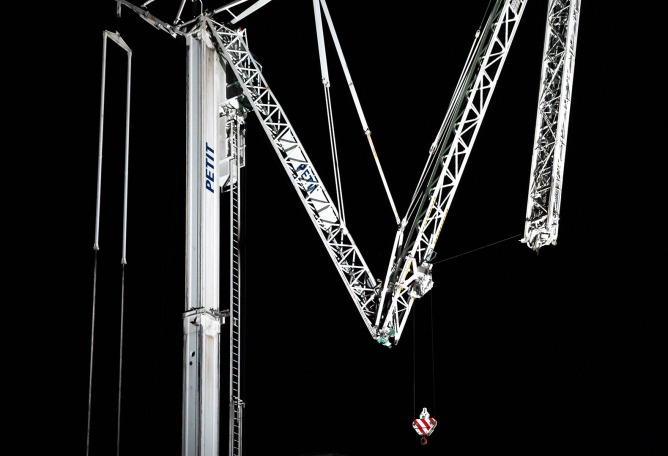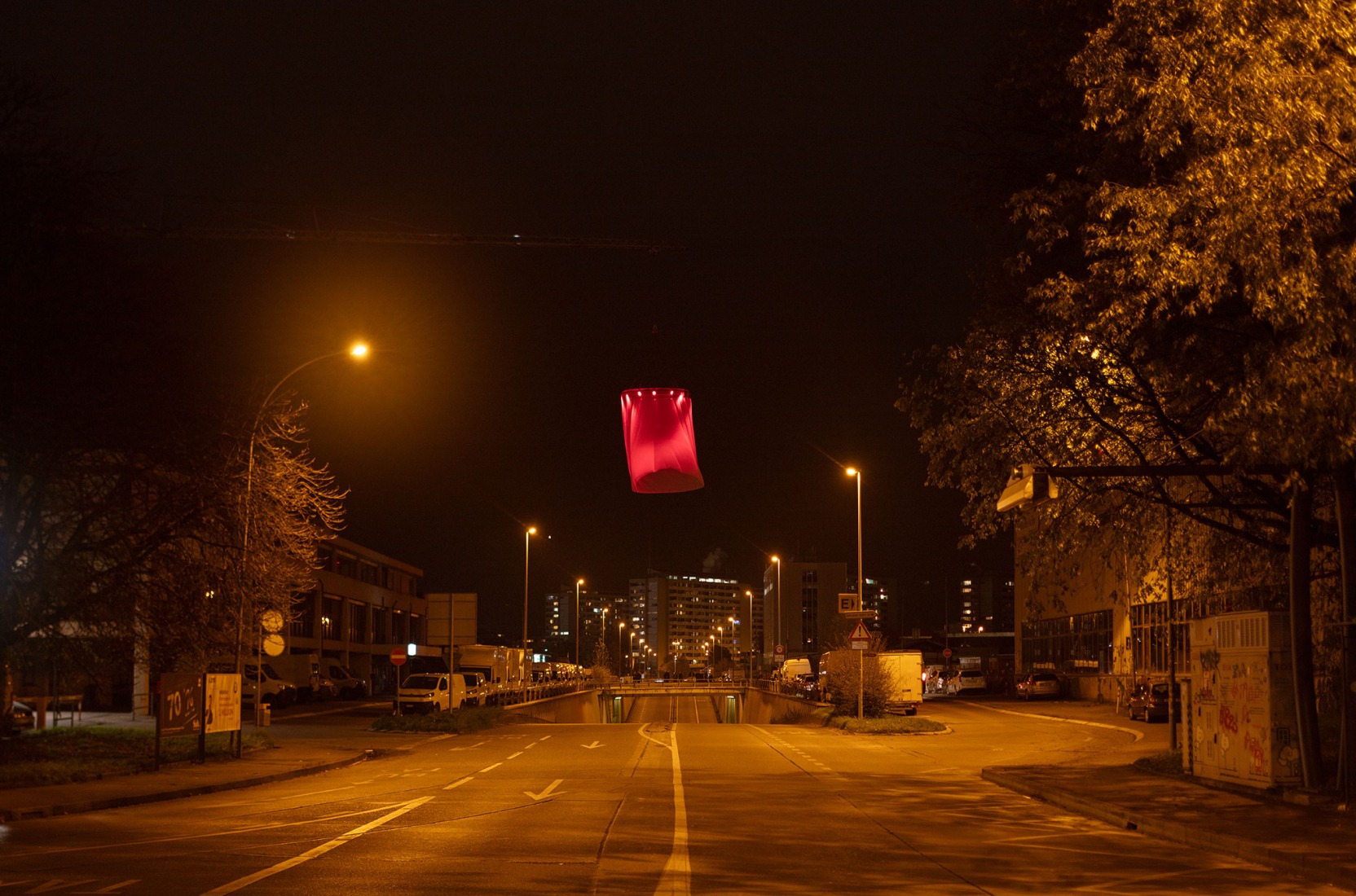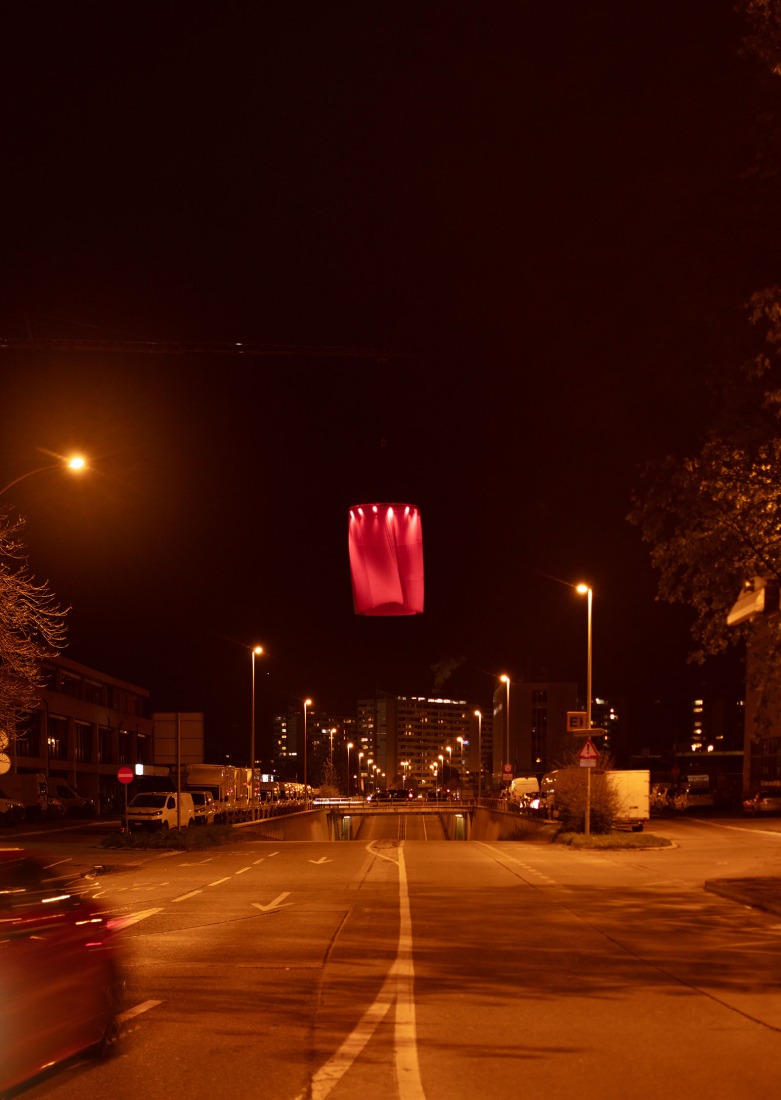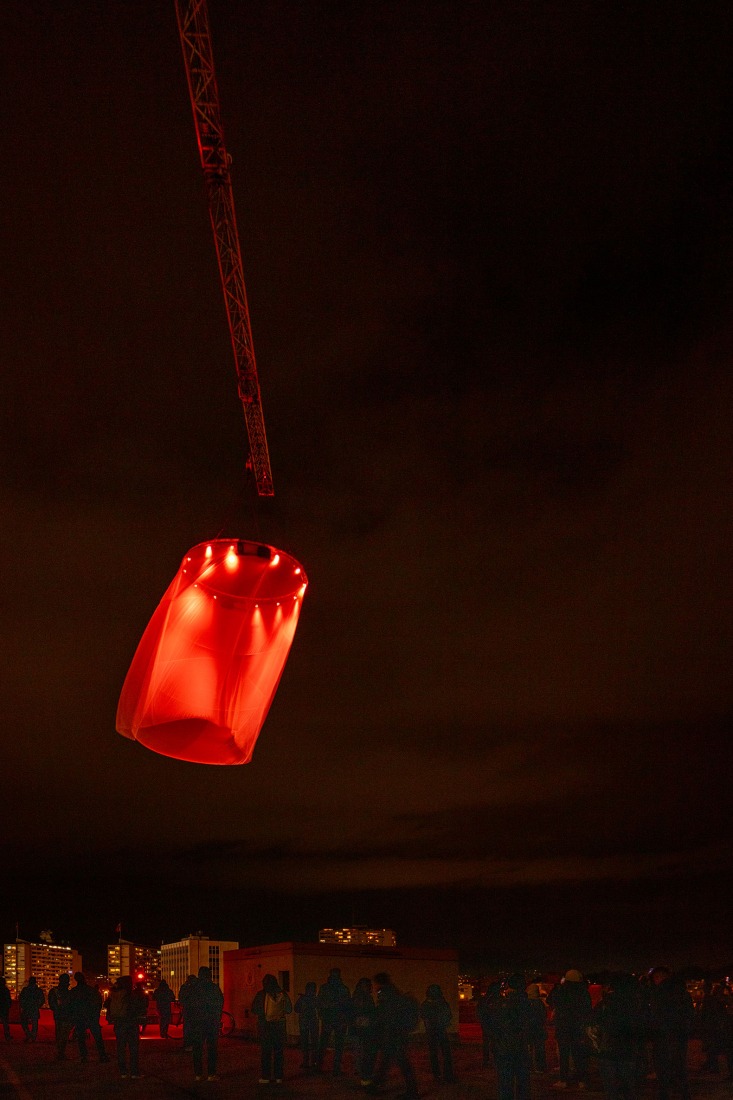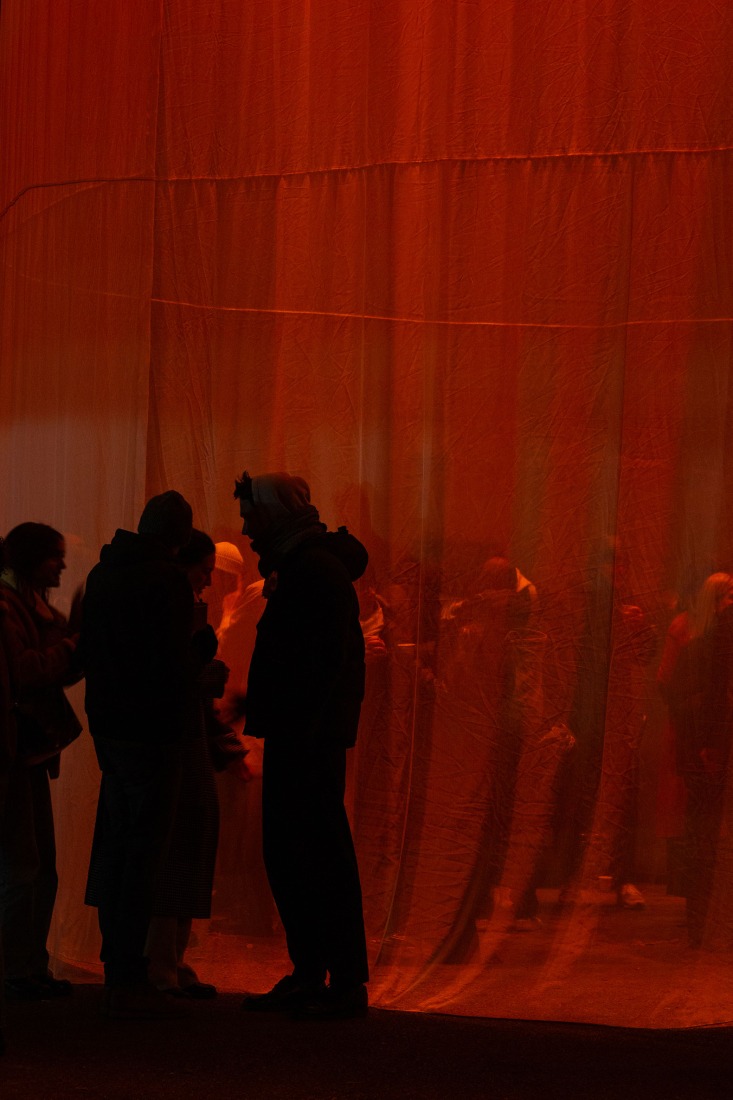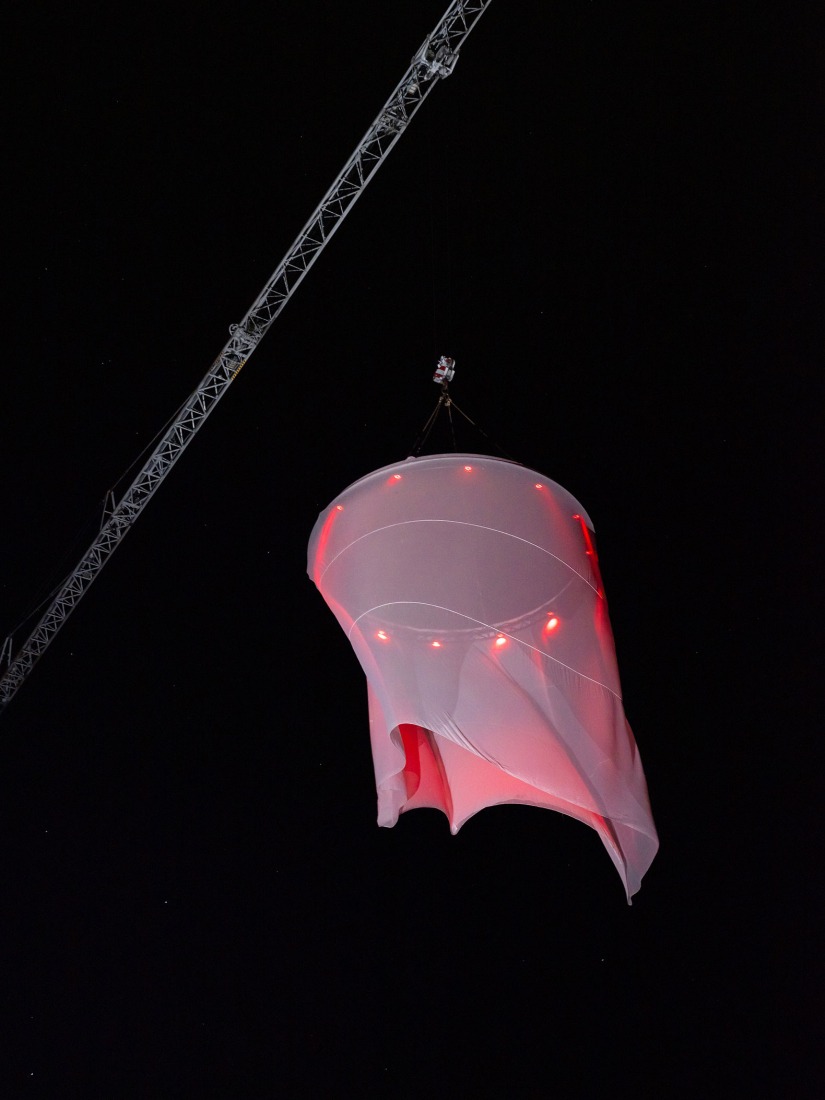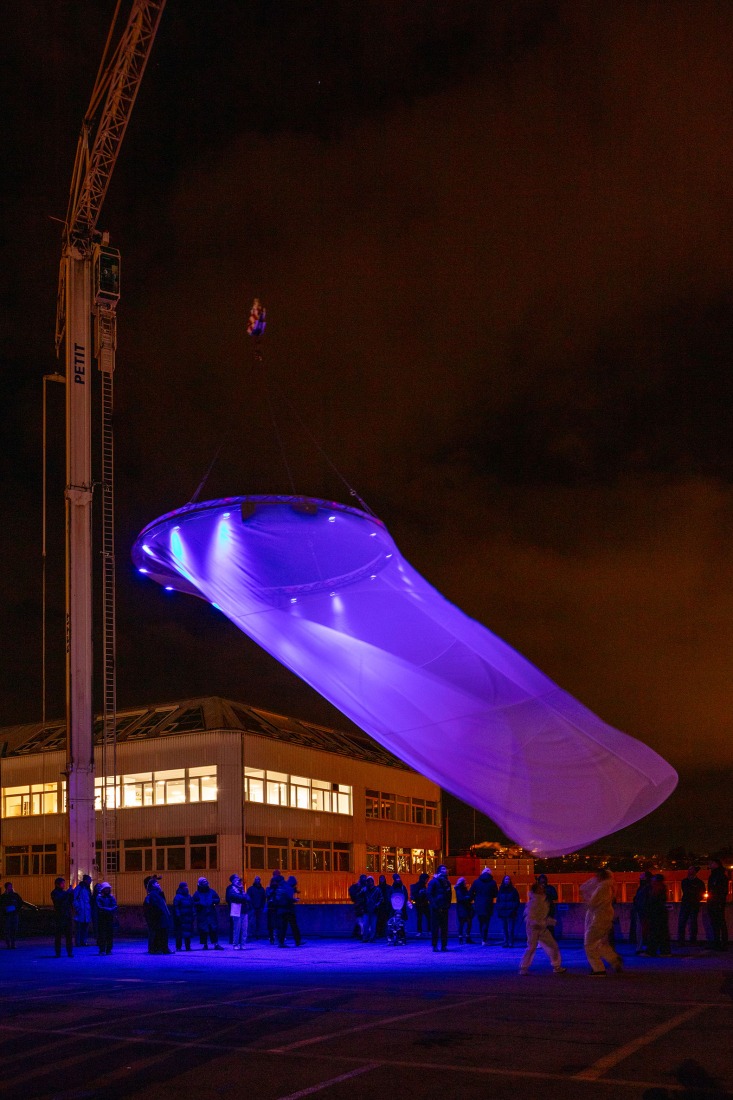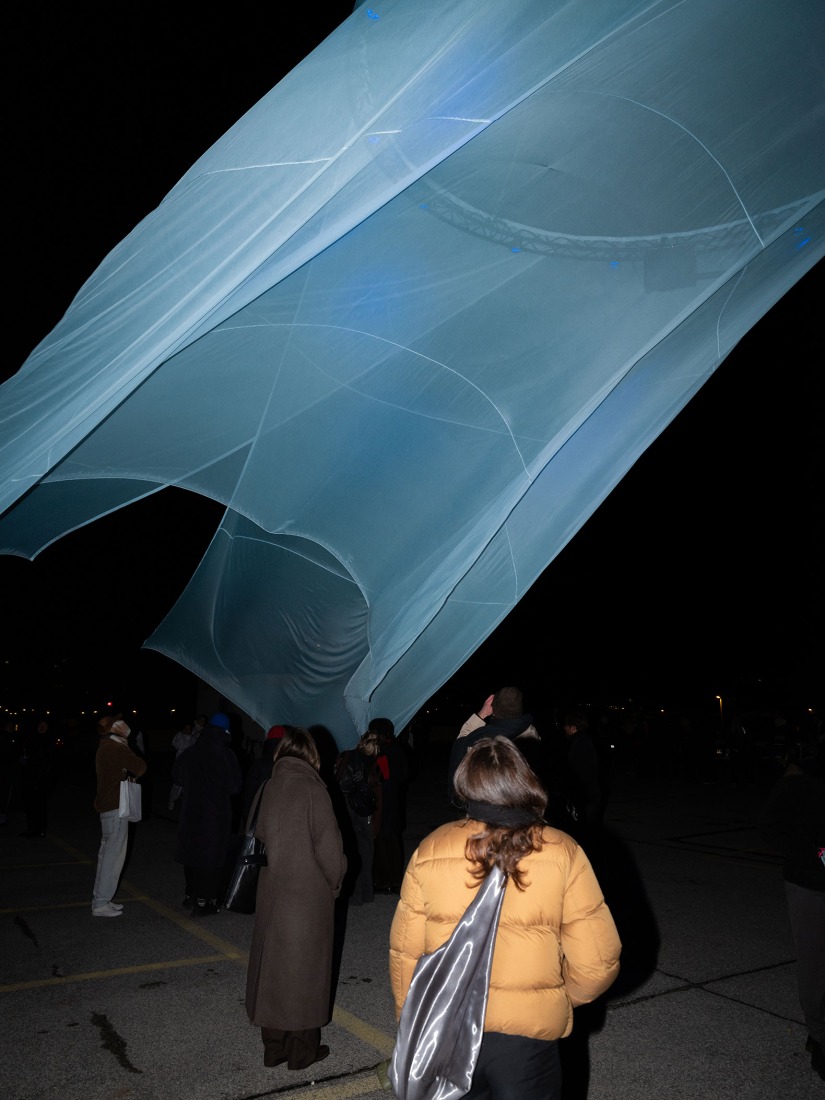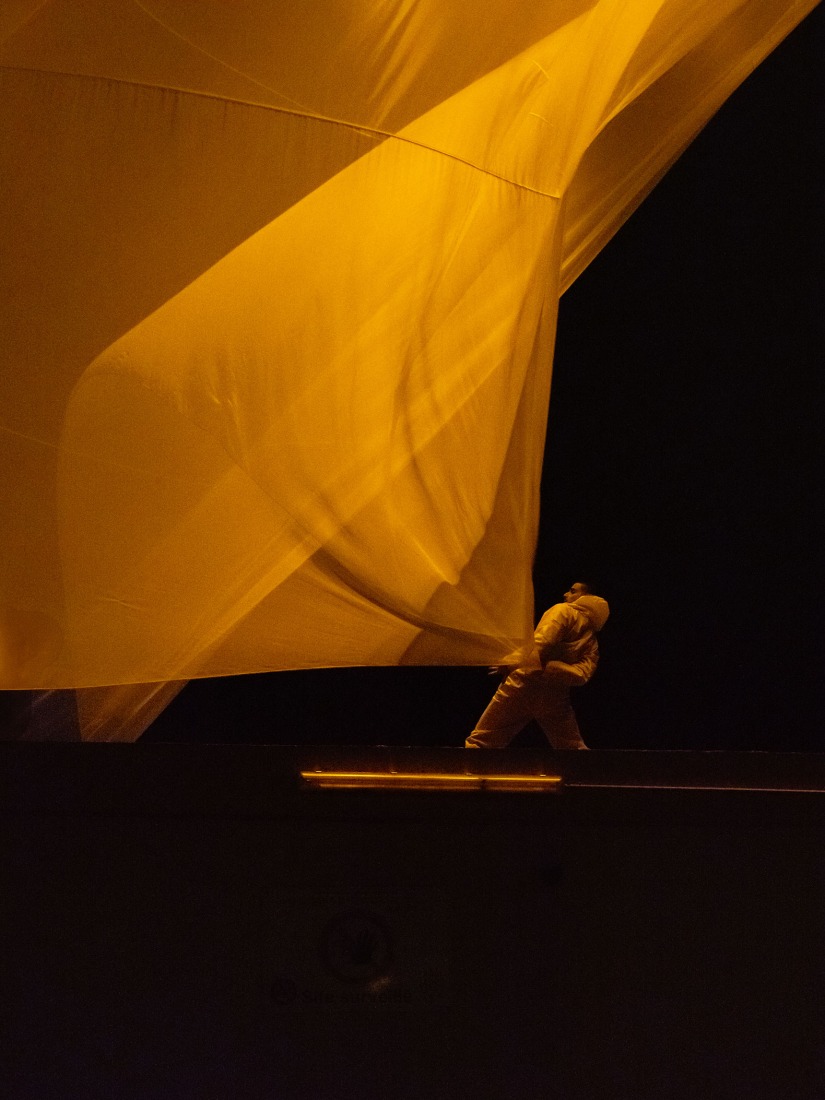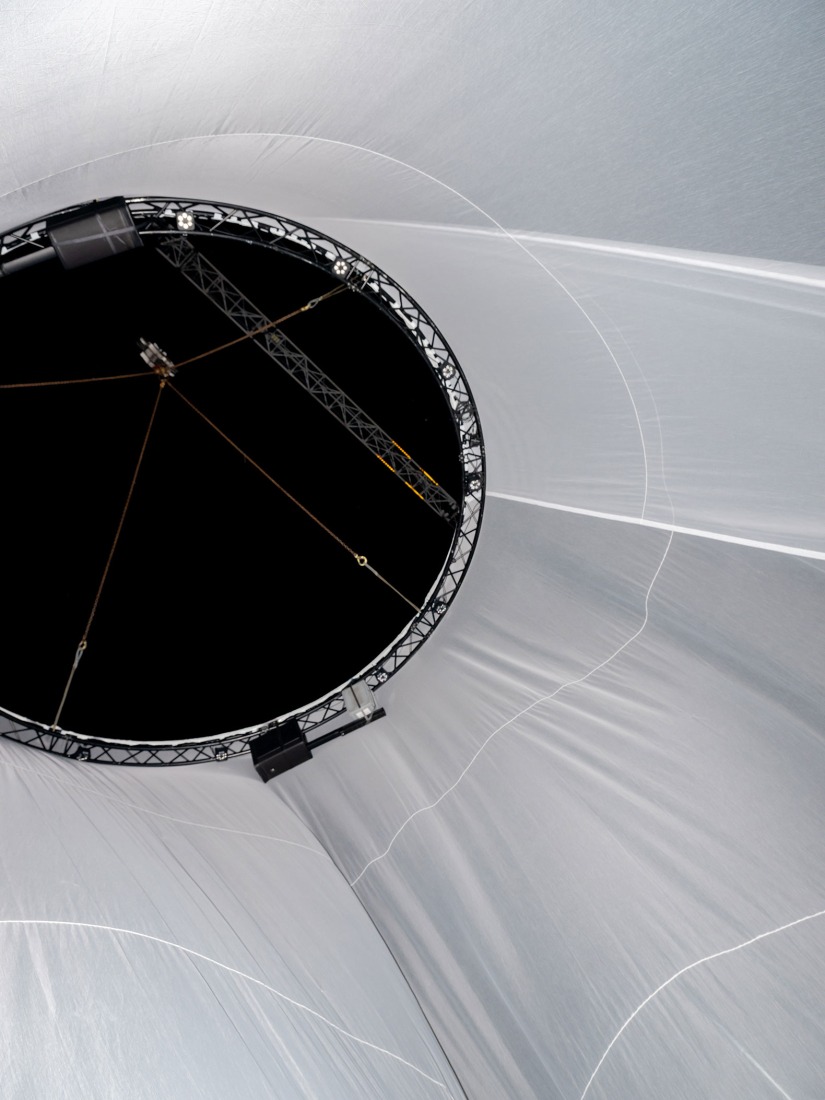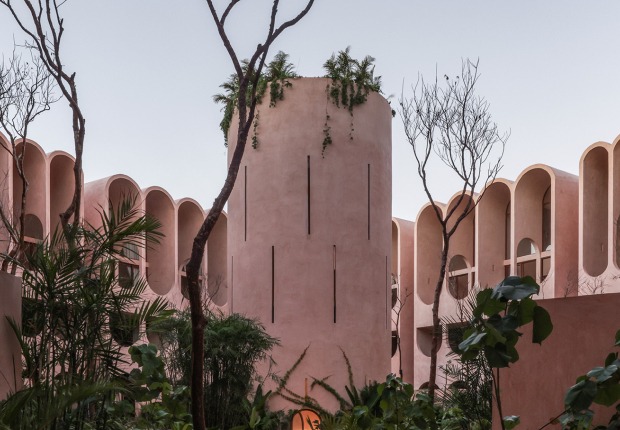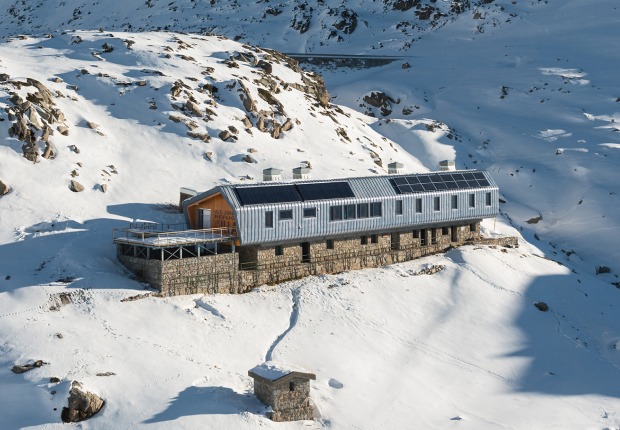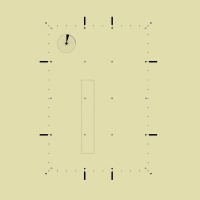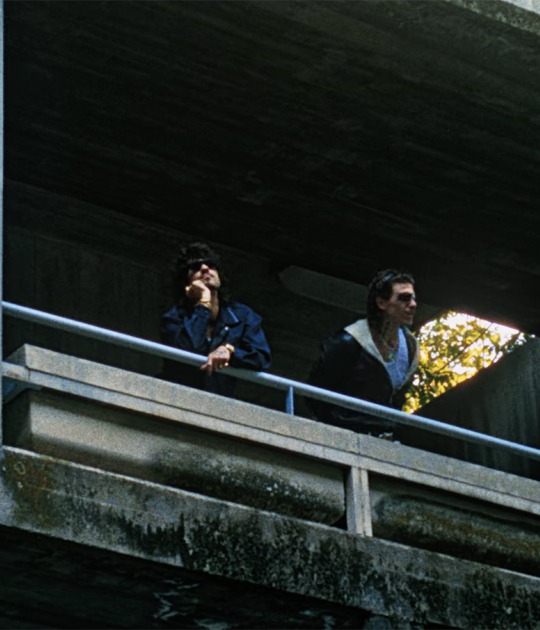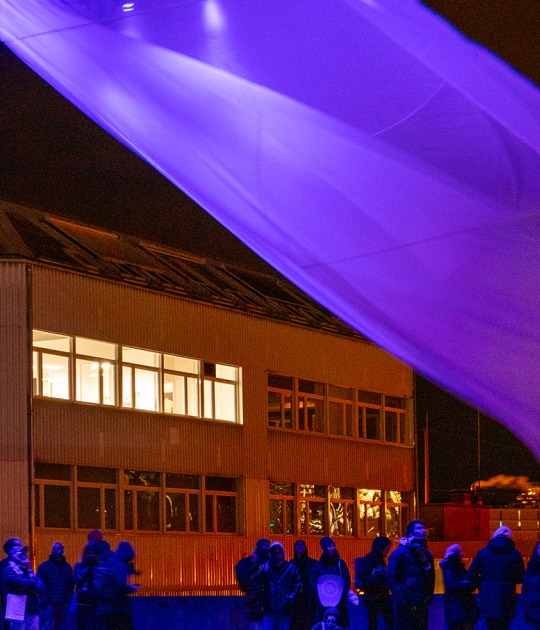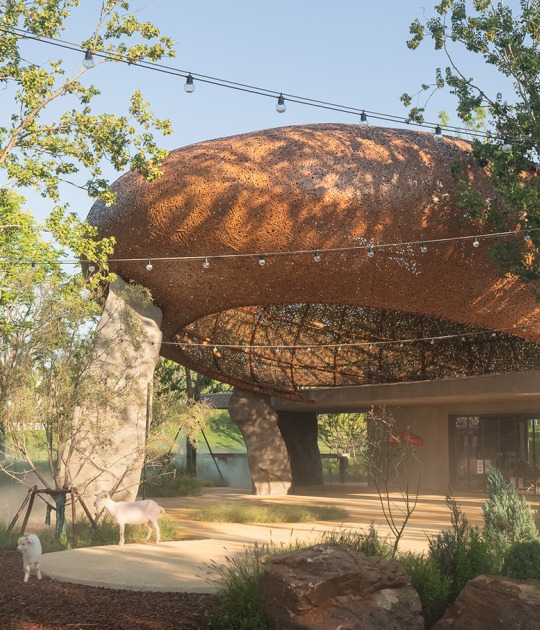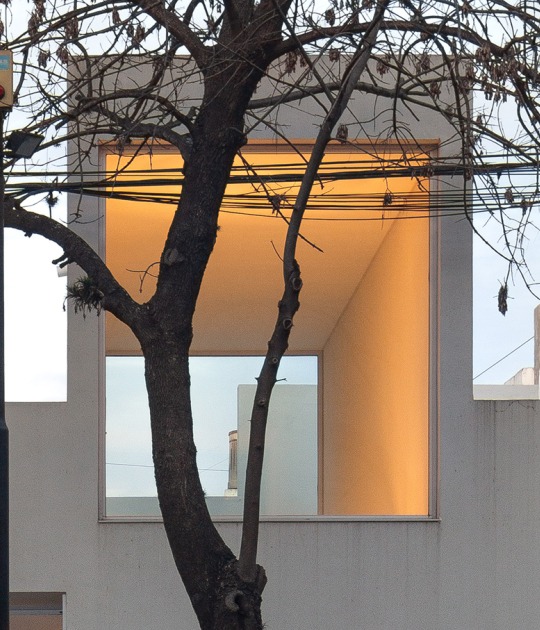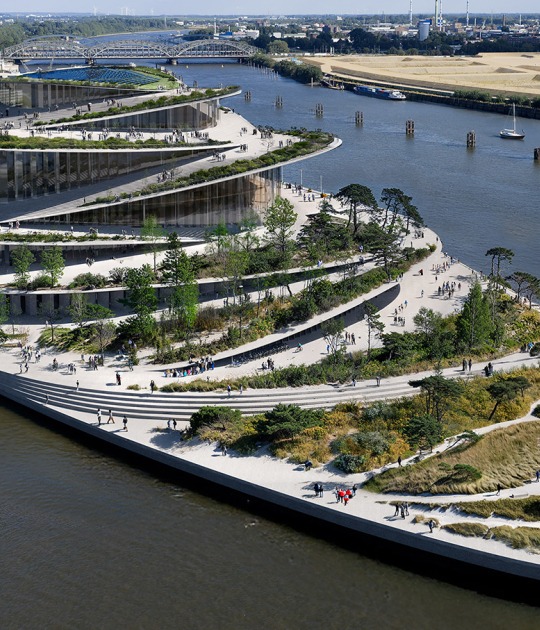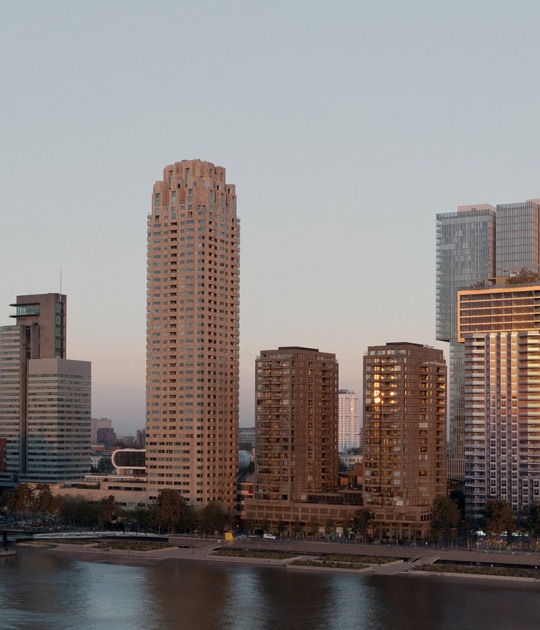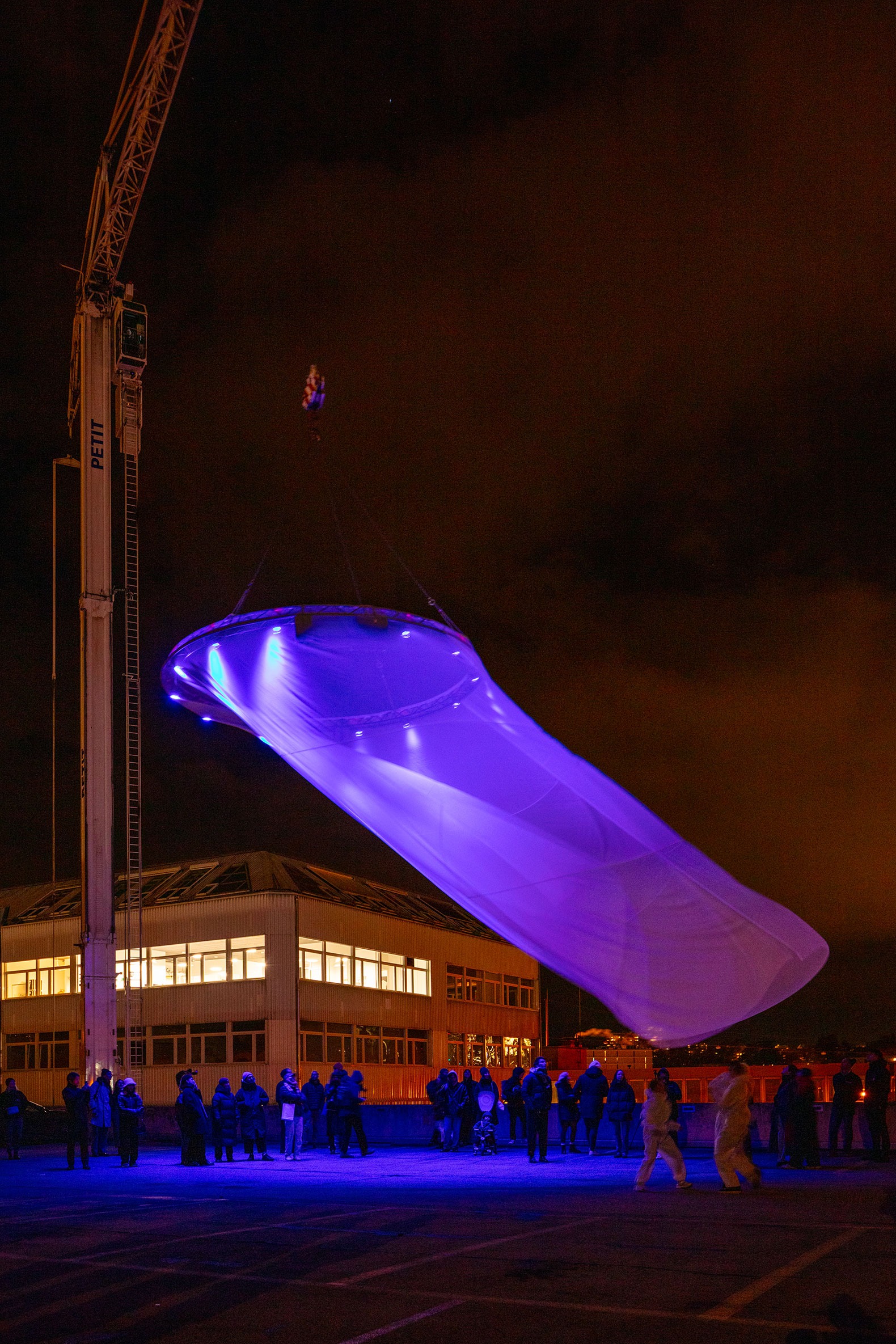
"Medusa," conceived by Collectif Xenia (Pierre Musy and Romain Iff) and architects Gauthier Füllemann and Denis Sermaxhaj, evokes movement, encounter, and the alteration of the atmosphere with an ephemeral intervention, designed as a multi-act work involving a crane, a veil, and a group of performers.
The proposal was executed by the slow movement of the crane, while the veil slides through a parking lot, giving way to a change in perception and transformation of the space for those who visit the place.
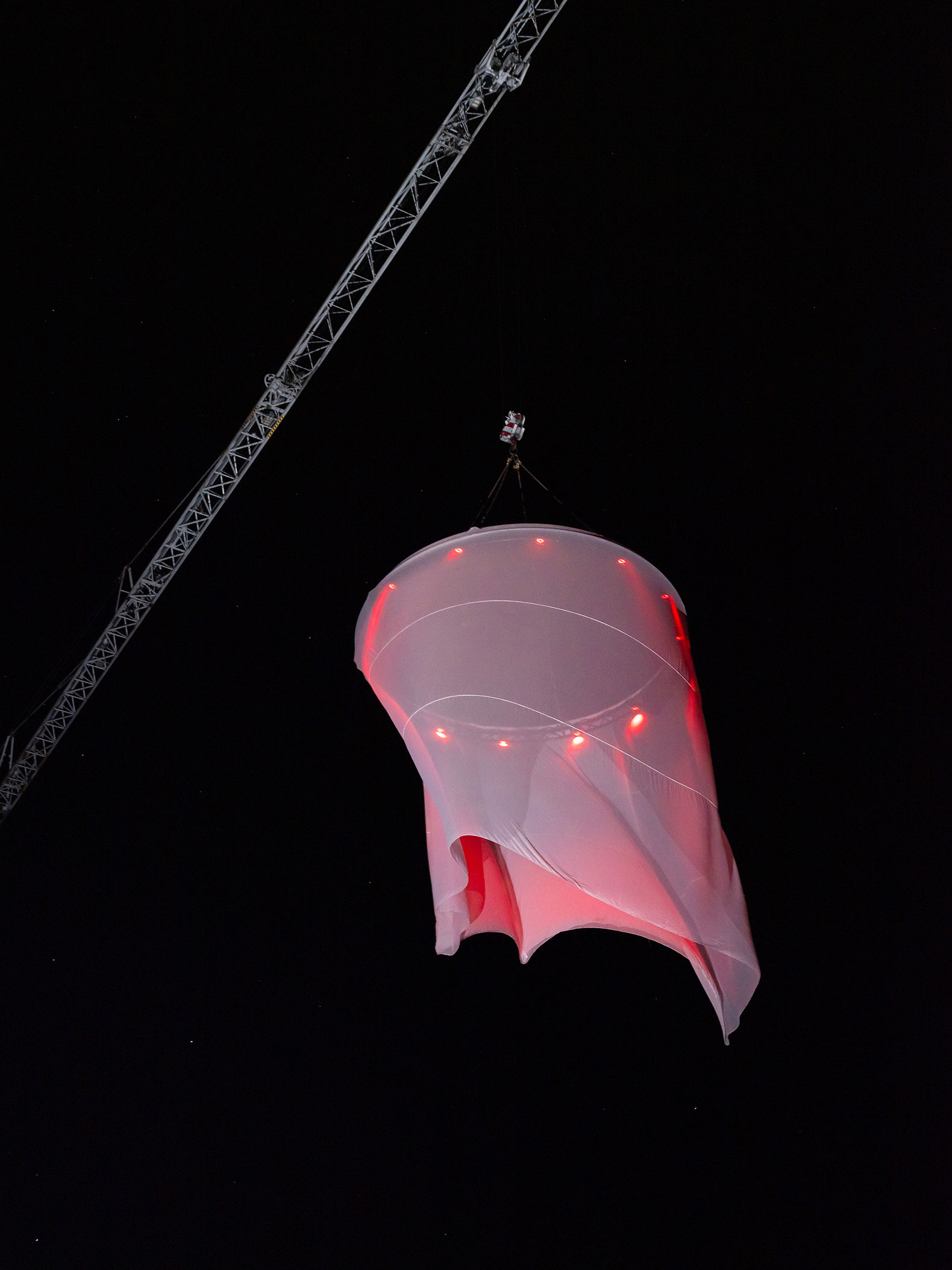
«Medusa» by Collectif Xenia, Gauthier Füllemann and Denis Sermaxhaj. Photograph by Pierre Marmy.
Project description by Collectif Xenia, Gauthier Füllemann and Denis Sermaxhaj
The PAV Foundation has been entrusted with the land owned by the State of Geneva, which possesses the majority of plots covering the Praille, Acacias, Vernets area.
Since the early 1900s, in order to foster the canton’s industrial development, the State has made its estates available through «droits distincts permanents », thereby separating land ownership from building ownership.

However, this access to property is limited in time, with a fixed duration of up to one hundred years. Once this period expires, the usage rights are revoked, and any buildings erected on the land revert by law to the landowner.
This particular framework of land management and property access has led to the current situation, where portions of territory, once fertile and dedicated to agricultural production, later converted into industrial halls, are now emptied of their uses. They quietly await the arrival of a new form of social production, carried by the urban project of the future PAV district.
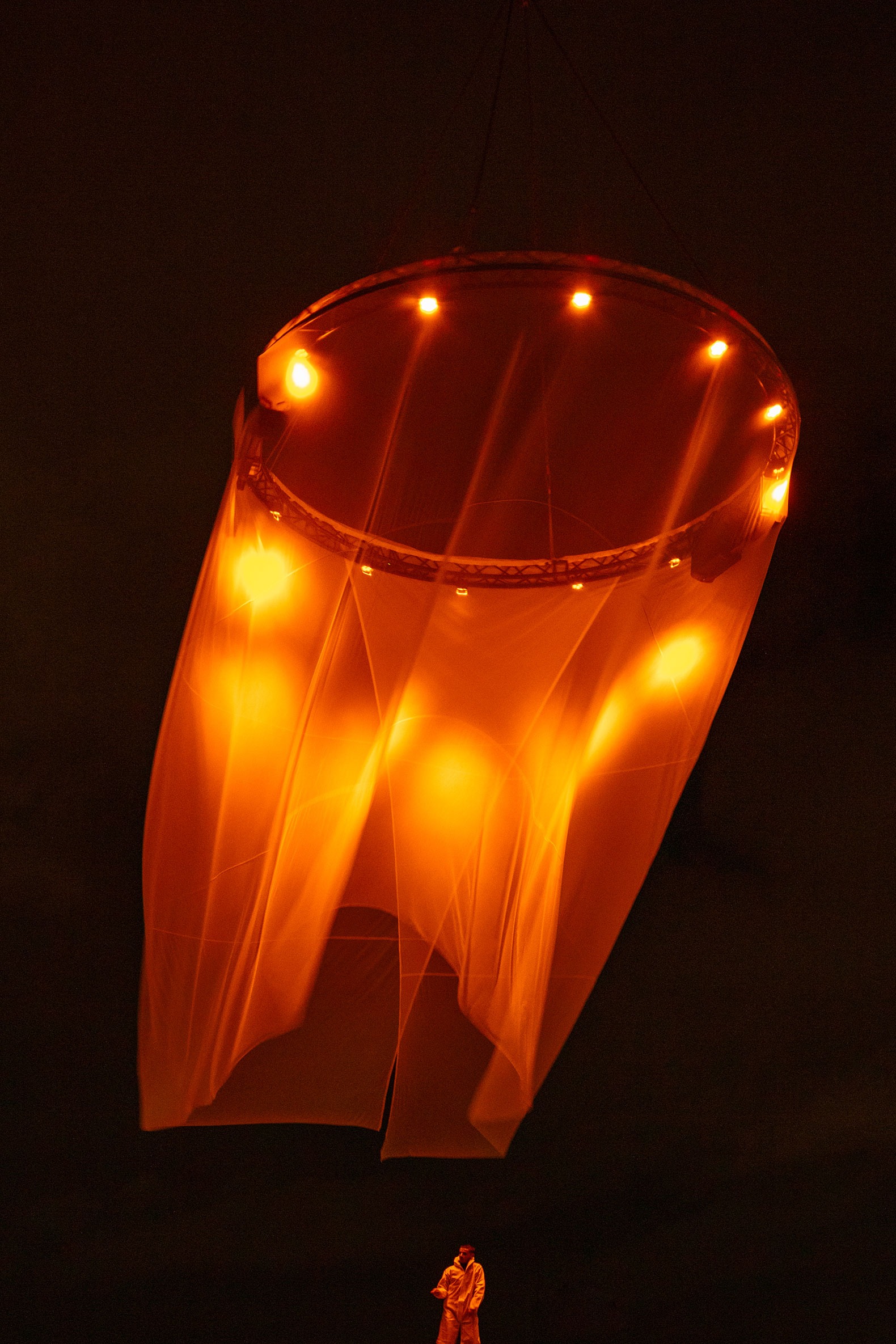
In the meantime, these industrial wastelands yearn to regain meaning, to be reinvested by life and by people seeking alternative and distinctive spaces for creation, which are above all financially accessible, something that the city, saturated by the market, rarely offers elsewhere. They also take advantage of a brief moment of freedom, between two regimes of property.
In this landscape dominated by massive, motionless industrial silhouettes, life slowly begins to move again thanks to the arrival of a performance. It is within this context that medusa comes to life, an intervention by collectif xenia (Pierre Musy and Romain Iff), with Gauthier Füllemann and Denis Sermaxhaj.
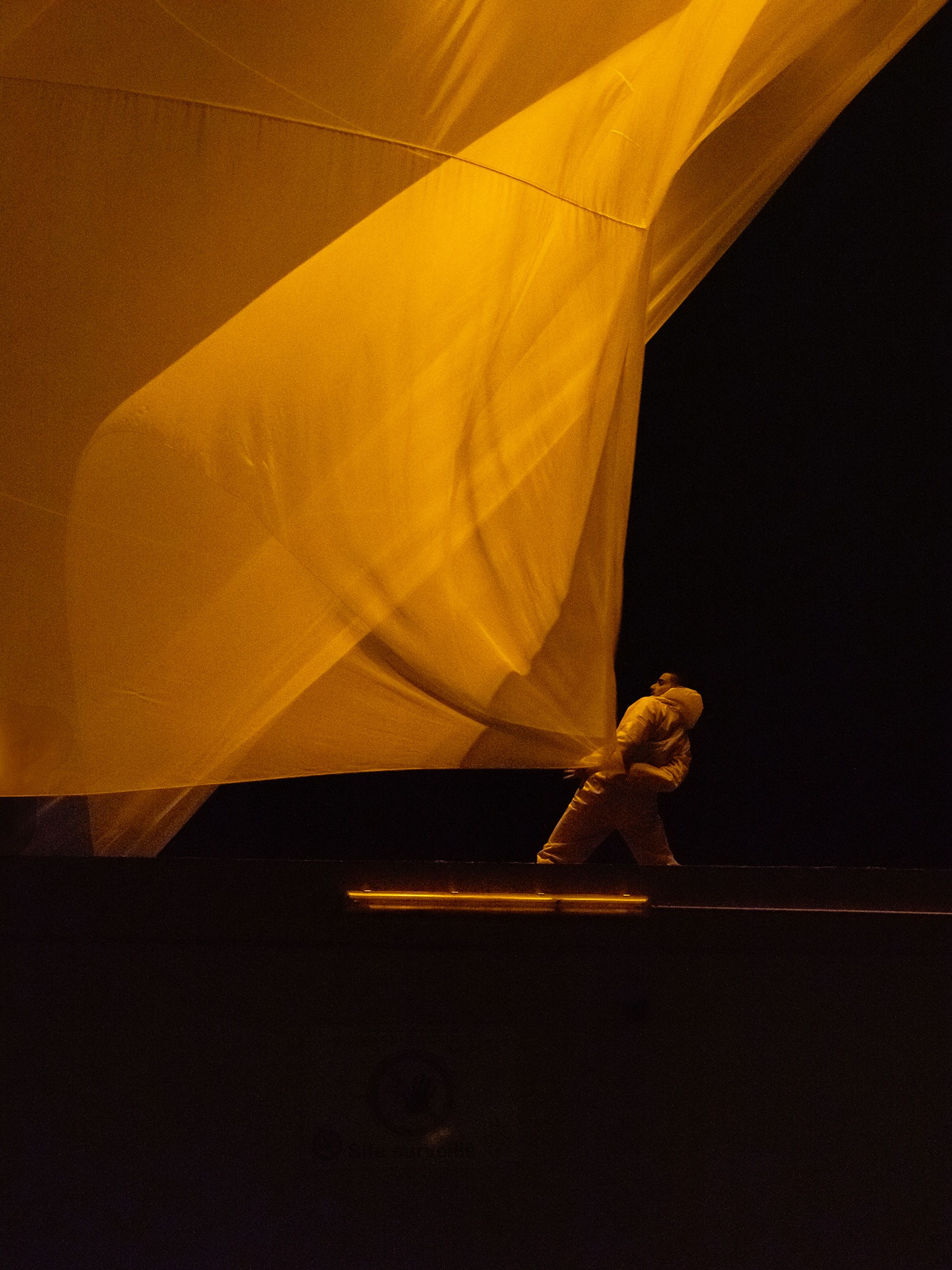
Conceived as a play in several acts, the project orchestrates a precise dialogue between a crane, a veil, and a group of dancers. A luminous crane unfolds slowly, once a symbol of urban transformation, it is here diverted from its original purpose. Its slow, deliberate movement lifts a veil, a catalyst for metamorphosis, which glides gracefully through the raw space of a parking lot, subtly transforming the atmosphere and the interactions that unfold along its path.
Moments of exchange and conviviality emerge in its wake. The project positions itself in counterpoint to the real estate and financial densification shaping the district. As towers rise, in this territory negotiated between the State and private investors, medusa occupies the interstitial spaces of waiting, those temporary voids left open between two construction phases.

At the scale of a neighborhood dominated by industrial monumentality, the project seeks to refocus attention on another dimension, that of the individual, the body, movement, and encounter, while also questioning the slowness of such neighborhood transformations, exploring ways of designing with the ephemeral to respond to the immediate needs and desires.


